Tired of paying $2,000+ monthly rent for a tiny apartment? Many people are trading their lease agreements for boat keys and finding freedom on the water.
Living on a sailboat isn’t just a romantic dream anymore; it’s become a real housing alternative that could save you thousands each year.
But is boat life actually cheaper than land life? The answer isn’t simple. While you’ll escape rent and mortgage payments, boats come with their own costs like marina fees, maintenance, and insurance.
Some liveaboards spend less than $1,500 monthly, while others pay $4,000+.
This guide breaks down every cost, hidden expense, and money-saving tip you need to know.
We’ll explore whether sailboat living makes financial sense for your situation and lifestyle goals.
Why People Are Choosing Sailboat Living
More people are choosing living on a boat to break free from expensive rent and mortgage payments that eat up most of their income.
They want to travel to new places without booking hotels or paying for flights. Many seek a simple life with fewer things and less waste.
Living on a sailboat gives them the freedom to be independent and rely on themselves instead of landlords or utility companies.
This lifestyle allows them to wake up to ocean views, move freely, and spend their money on experiences rather than monthly bills.
Pros and Cons of Living on a Sailboat
While the idea of sailboat living evokes freedom and simplicity, the reality comes with trade-offs. Here’s a balanced look at what makes this lifestyle rewarding and what can make it challenging.
| Pros | Cons |
|---|---|
| Freedom to travel and explore | Limited space and privacy |
| Lower living costs (in some cases) | High maintenance demands |
| Close connection with nature | Dependent on the weather |
| Minimalist, intentional lifestyle | Limited access to healthcare |
| Supportive sailing community | Complex legal/travel documentation |
Types of Boats You Can Live On
Whether you’re planning to cruise the open seas or stay docked in a cozy marina, choosing the right type of boat is the foundation of your liveaboard lifestyle. Each option offers unique advantages, challenges, and costs to consider.
1. Monohull Sailboats
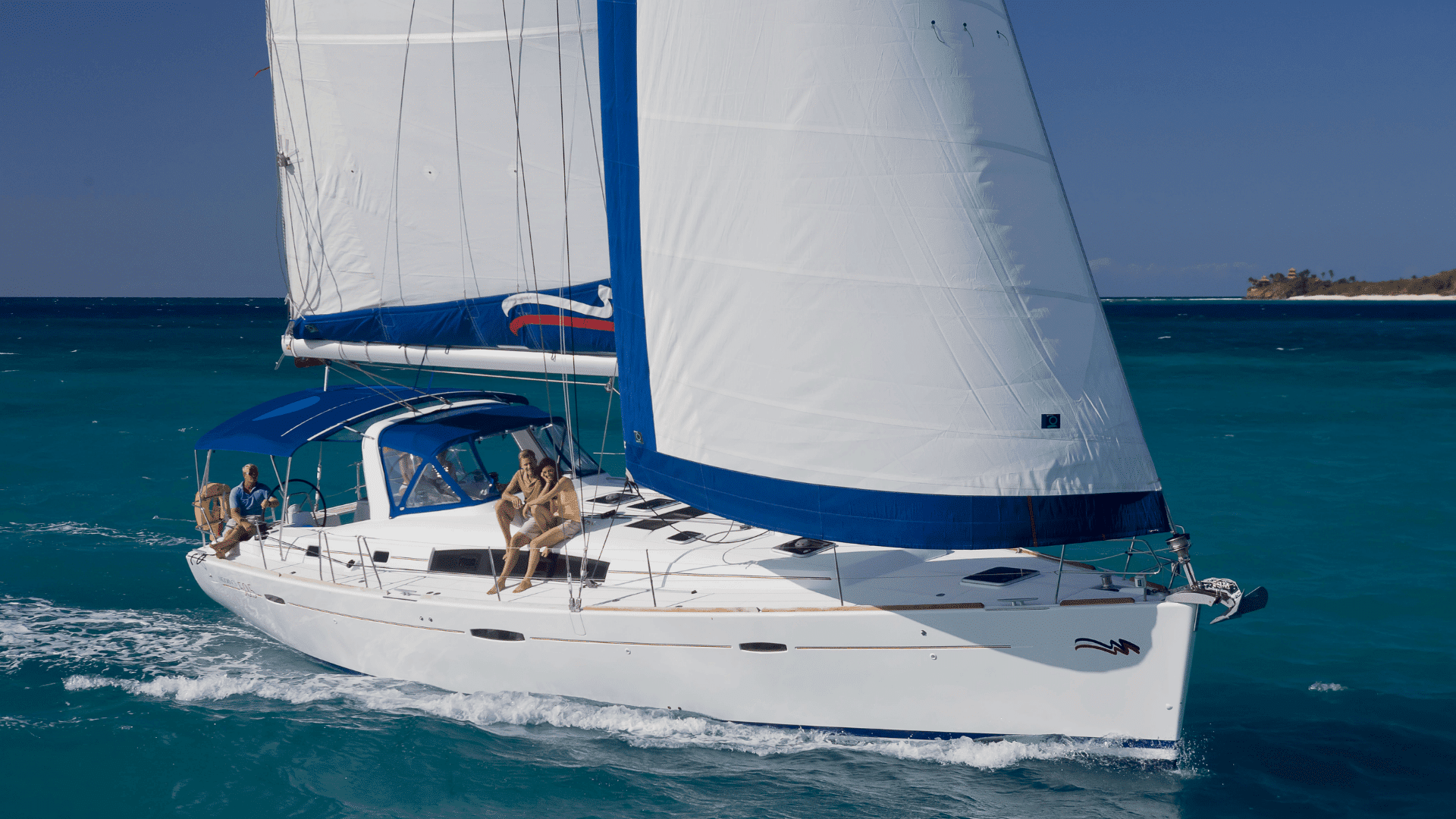
Source: moorings.com
The best monohull for liveaboard living starts around $30,000 for older models. These single-hull boats are the classic choice for people who want to sail and live cheaply.
They work great for individuals or couples who don’t need a lot of space. When storms hit, monohulls cut through waves better than other boat types, making them safer in rough seas.
2. Catamarans

Source: catamarans-fountaine-pajot.com
Liveaboard catamarans offer significantly more living space, but at a higher purchase price. These twin-hull boats don’t rock side to side as much, which helps prevent seasickness.
Families and remote workers love the extra rooms and stable internet connection spots. However, buying a good catamaran costs twice as much as a similar-sized monohull.
3. Trawlers and Motor Sailers
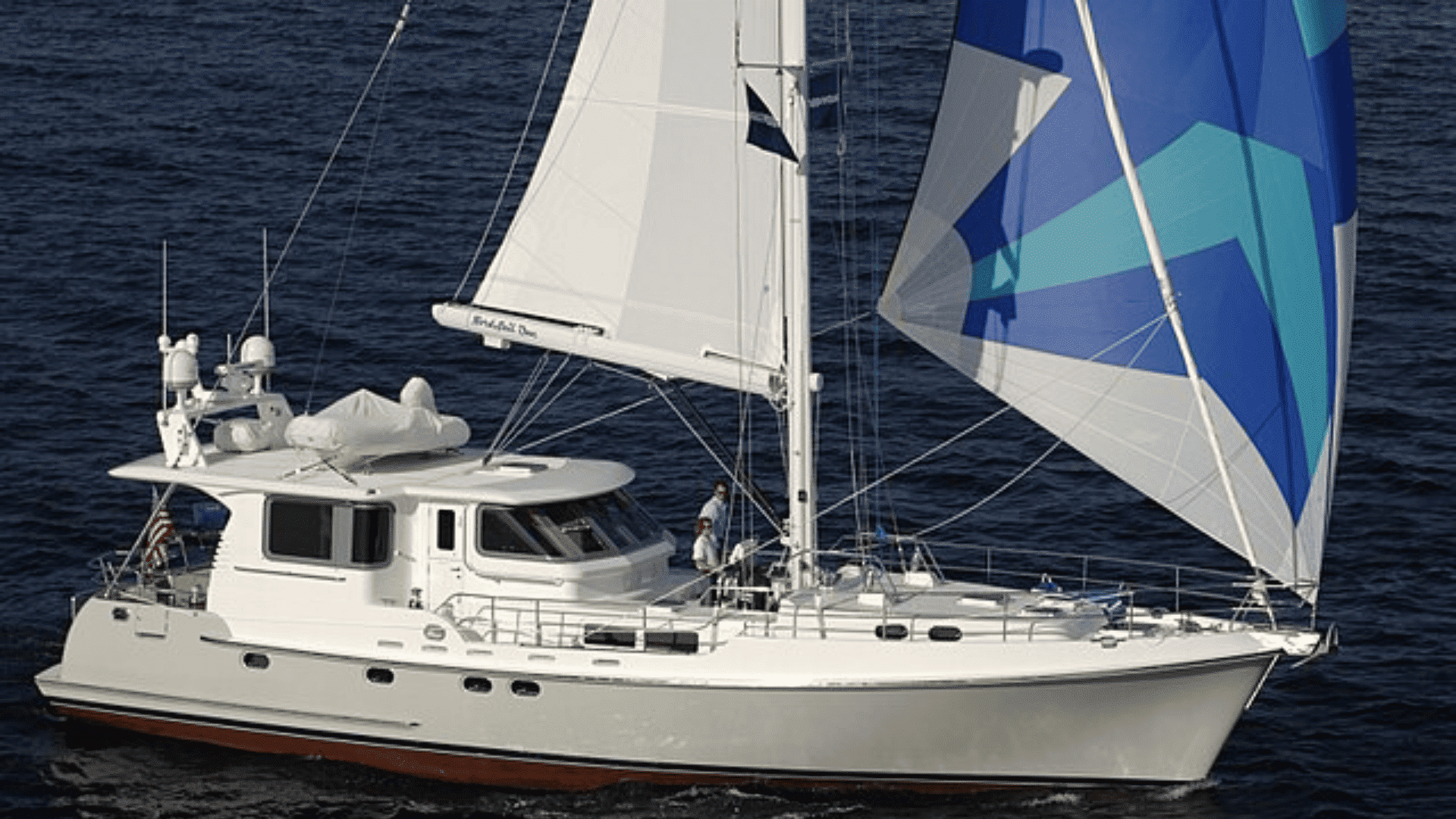
Source: en.wikipedia.org/wiki/Main_Page
The trawler vs sailboat for living debate comes down to comfort versus fuel costs. Trawlers offer apartment-like interiors with full kitchens and separate bedrooms.
They’re perfect for people who want to live on water but don’t care about sailing. The downside is burning expensive diesel fuel every time you move, plus engine repairs can cost thousands.
4. Houseboats
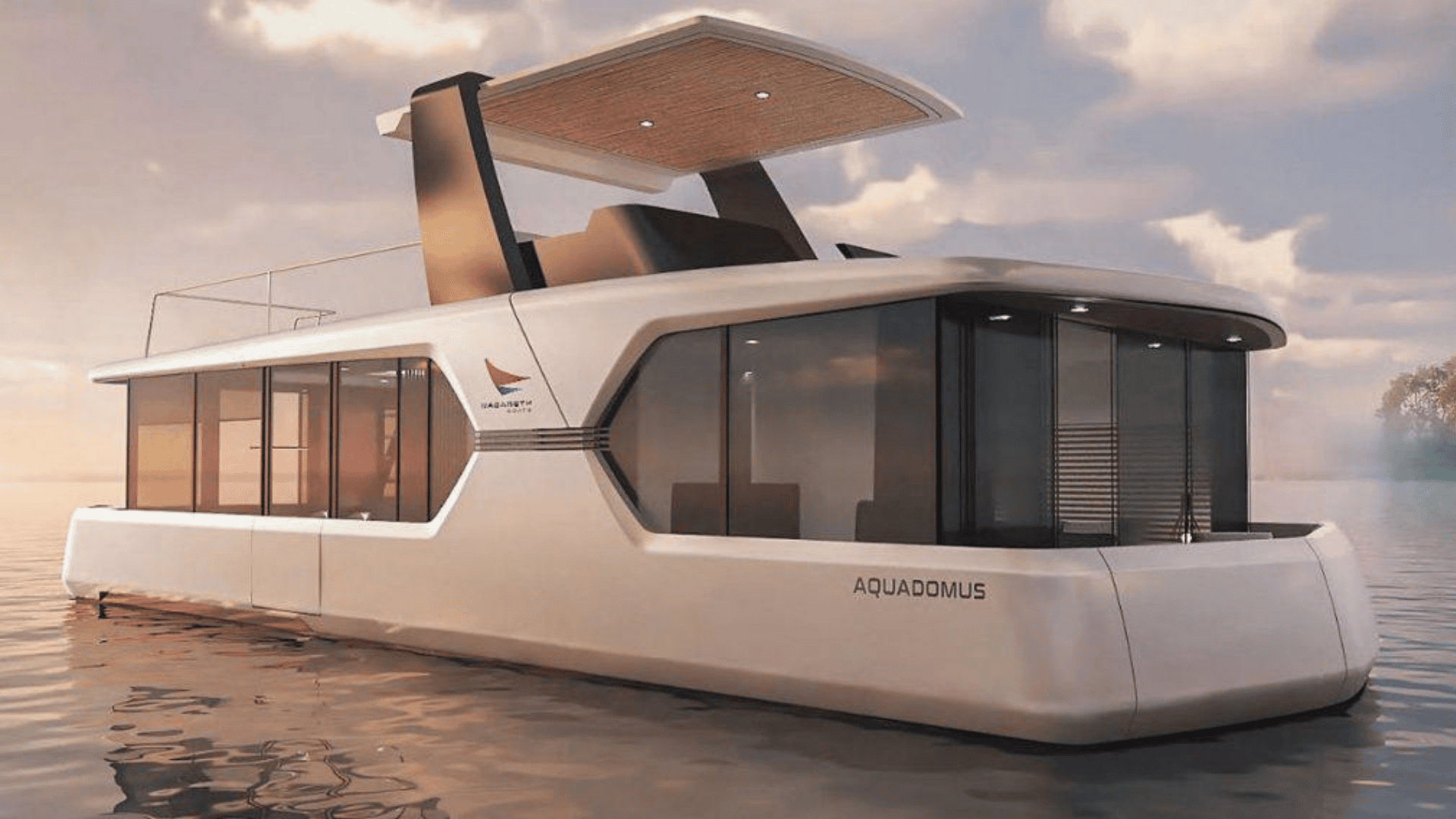
Source: yachtworld.com
Houseboat living vs sailboat means choosing between mobility and comfort. Houseboats feel like floating homes with full-size appliances and plenty of storage space.
You’ll stay connected to shore power and water systems easily. But these boats can’t handle ocean waves, so you’re stuck in calm harbors and rivers forever.
How to Transition from Land to Sea
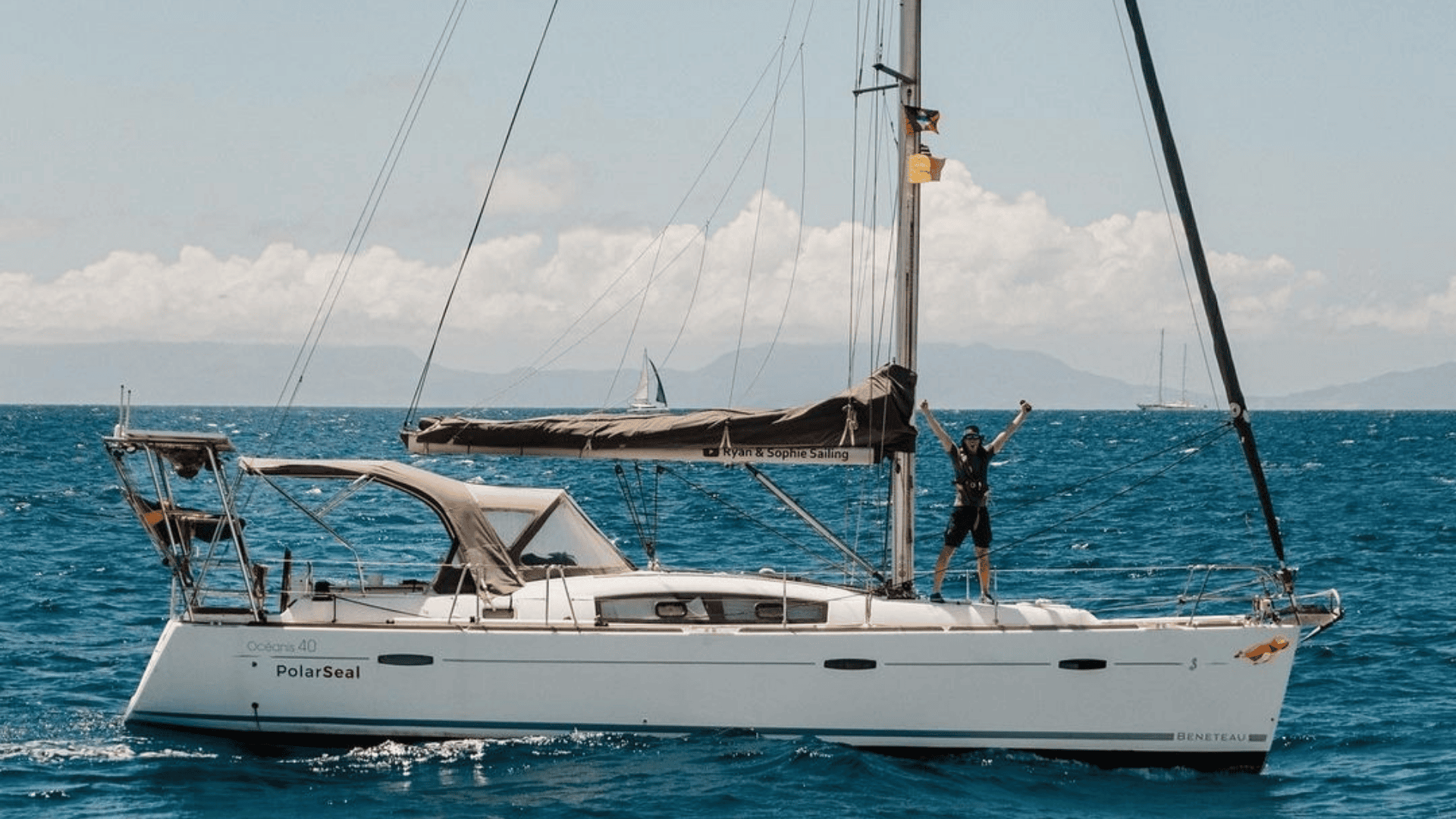
Source: autoevolution.com
Learning how to move onto a sailboat starts with downsizing your belongings to fit in 300-500 square feet of living space and selling items you won’t need on water.
Sell your home for capital or rent it out for monthly income to fund your boat purchase and cruising costs.
Take sailing lessons at local yacht clubs or sailing schools to build basic skills before buying your first boat.
Try living aboard rentals or charter boats for weeks at a time to see if you can truly enjoy the confined space, constant motion, and maintenance demands before making the permanent switch from land life.
Initial Costs of Transitioning to Boat Life
- Boat purchase: used vs new – Used boats cost $30,000-$150,000 while new ones start at $300,000, making used the smart choice for most first-time liveaboards.
- Survey, inspection, and closing costs – Expect to pay $1,500-$3,500 for professional boat surveys and legal paperwork before you own the boat.
- Registration and taxes – Most states charge 6-8% sales tax plus annual registration fees of $200-$800, depending on boat size and location.
- Safety upgrades (life raft, EPIRB, VHF, etc.) – Essential safety gear costs $3,000-$8,000 total but could save your life in emergencies at sea.
- Marina deposit or mooring arrangement – Marinas typically require a one-month deposit plus a security deposit ($1,000-$3,000), or mooring balls cost $200-$500 monthly in most areas.
How Expensive Is It to Live on a Sailboat Full-Time?
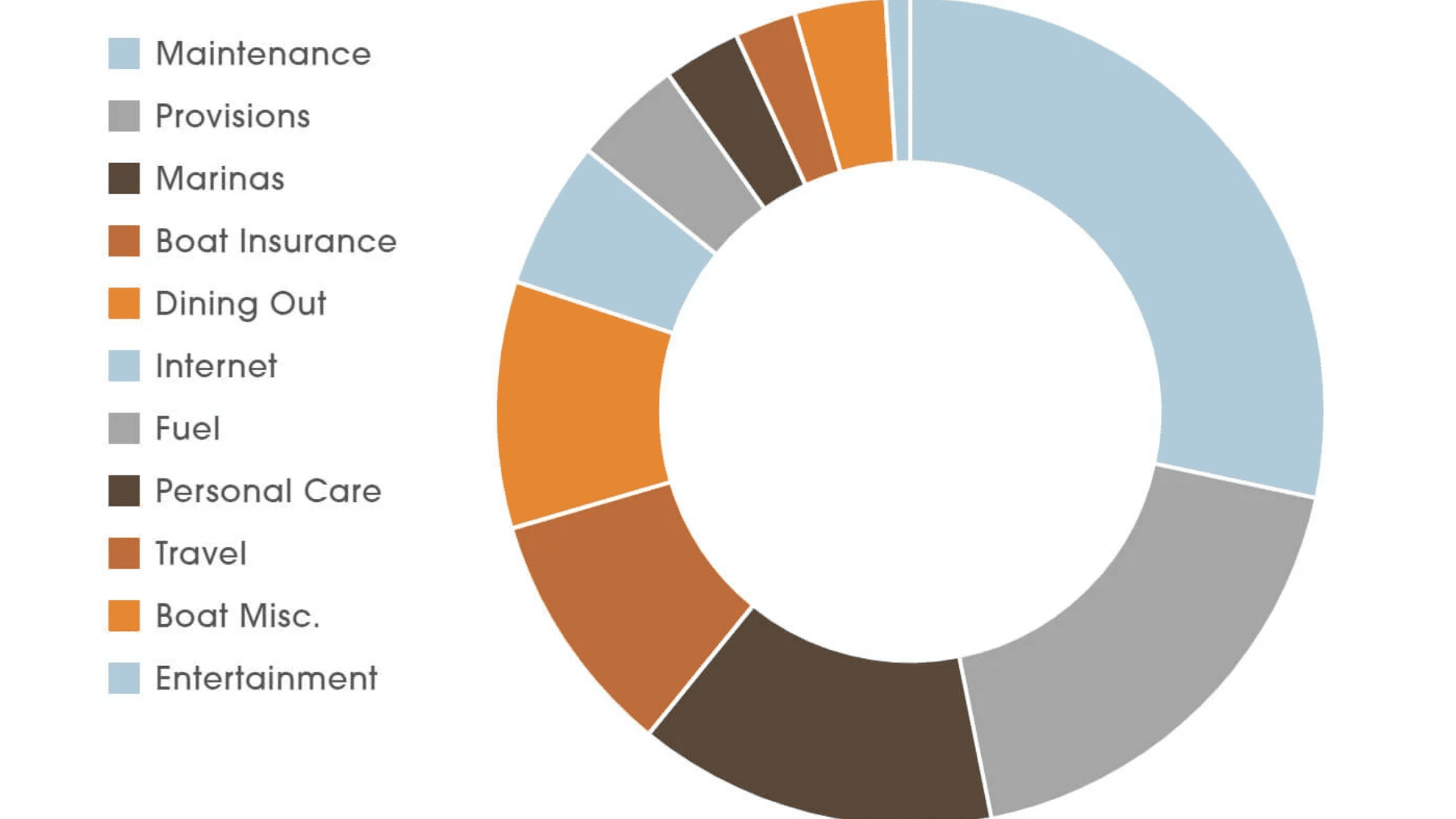
Source: homethatroams.com
Learn the real-world costs of full-time sailboat living, from boat maintenance and marina fees to daily living expenses, and see if life on the water fits your budget.
1. Docking/marina Fees or Anchoring Costs
Marina slips cost $300-$1,500 per month, depending on location and boat size. Popular areas like Florida or California charge a premium rate, while smaller towns offer cheaper options.
Free anchoring saves thousands yearly, but limits your access to shore power and water. You’ll need a dinghy ($2,000-$5,000) to get to land when anchoring out.
2. Maintenance and Haul-Outs
Annual haul-outs for bottom cleaning and repairs cost $1,000-$3,000 at most boatyards. Regular maintenance, such as engine service, sail repair, and rigging checks, adds $2,000-$5,000 yearly.
Older boats require more frequent repairs, whereas newer ones are covered by warranty protection. Budget 10% of your boat’s value each year for unexpected repairs and upgrades.
3. Insurance (Liability + Comprehensive)
Boat insurance costs $1,000-$3,000 annually for most liveaboards, depending on boat value and coverage. Liability coverage protects you if you damage other boats or property.
Comprehensive insurance covers theft, storms, and major repairs, but adds significant cost. Many cruisers opt for reduced coverage on older boats to save money.
4. Fuel and Propane
Diesel fuel costs $200-$800 monthly for motor boats, while sailboats use much less. Propane for cooking and heating runs $30-$80 per month for most boats.
Generator fuel adds another $100-$300 monthly if you need constant power. Fuel prices vary widely by country, with some places costing three times more than others.
5. Food, Provisioning, and Waste Disposal
Grocery costs remain similar to living expenses, ranging from $300 to $600 per person per month. Remote areas charge higher prices for basic items like milk and vegetables.
Waste disposal costs $20-$50 monthly at marinas or requires trips to shore facilities. Water costs extra at many marinas, adding $30-$100 to monthly bills.
6. Connectivity (Starlink, Hotspot, Marina Wi-Fi)
Starlink satellite internet costs $120 monthly but works almost everywhere with good speeds. Cell phone hotspots cost $50-$100 monthly but have data limits and poor coverage offshore.
Marina Wi-Fi is often free but slow and unreliable for remote work. Many cruisers combine multiple internet options for reliable connectivity.
7. Cruising Permits and Customs (if International)
Cruising permits cost $50-$500 per country, depending on boat size and stay length. Customs and immigration fees add $20-$100 per entry in most countries.
Some nations require expensive bonds or deposits that you get back when leaving. Annual costs for international cruising range from $1,000-$5,00,0, depending on your route.
Sailboat Life vs Traditional Living: Which Lifestyle Wins?
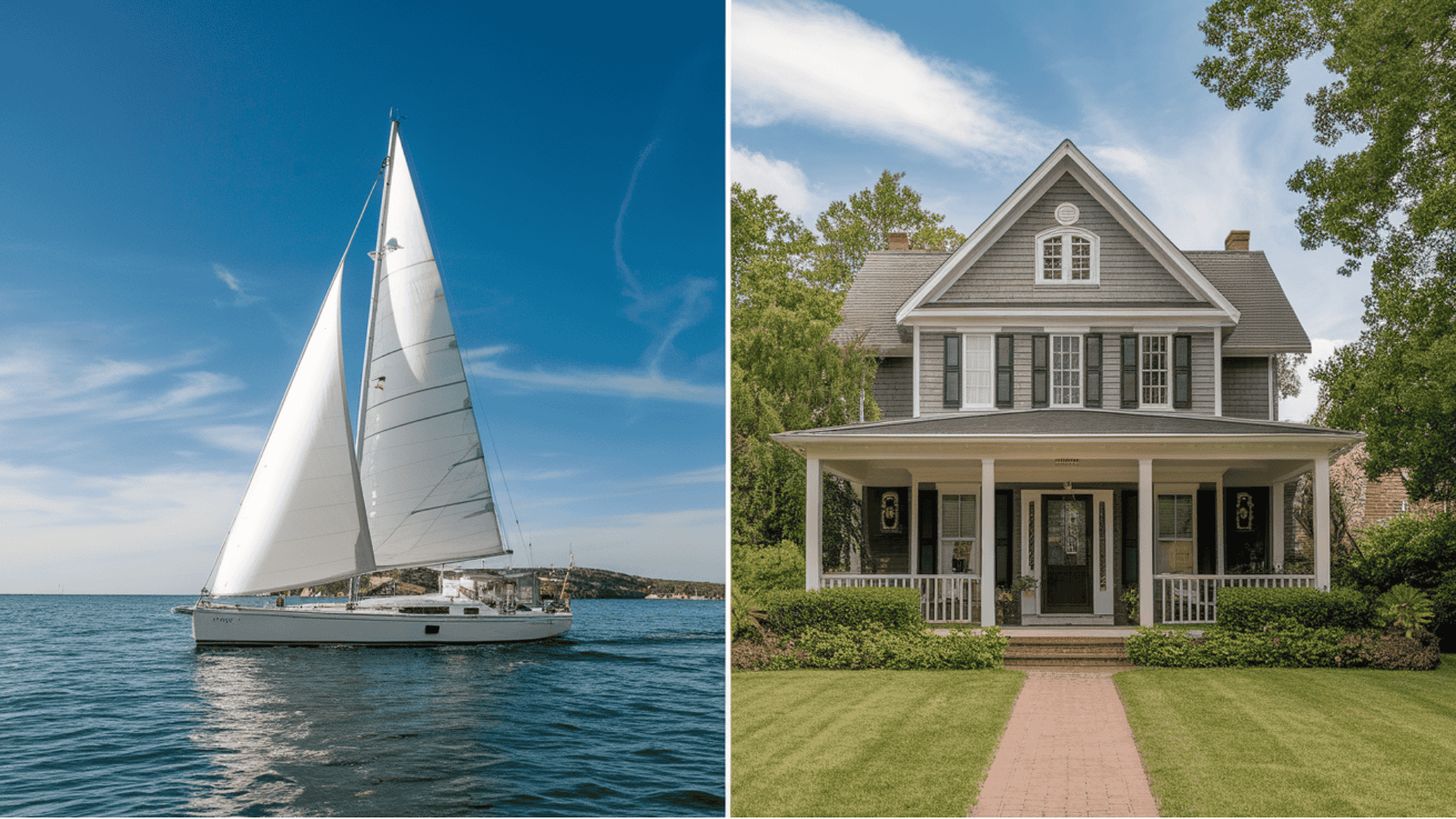
Explore the key differences between living aboard a sailboat and life on land, from housing and emergency funds, to see which lifestyle truly fits your values.
| Category | Sailboat Life | Traditional Living |
|---|---|---|
| Housing | One-time buy, no rent if owned | Monthly rent or mortgage |
| Utilities | Solar, watermaker, minimal bills | Bills for power, water, internet, and trash |
| Commuting | Anchor anywhere, work remotely | Daily drive or transit |
| Maintenance | Frequent DIY repairs, weather wear | Occasional home fixes |
| Resale Value | Depreciates fast, depends on upkeep | Often appreciates with time |
| Insurance | Varies, often cheaper | Usually higher premiums |
| Emergency Funds | Needed for big repairs (engine, rigging, leaks) | Needed for major issues (roof, HVAC, plumbing) |
Tips to Make Sailboat Life Financially Sustainable
- Remote work: freelance, tech, consulting, digital nomad life, earn $3,000-$8,000 monthly through online work like web design, writing, or programming while living in cheap locations worldwide.
- Seasonal charters or teaching sailing – Make $500-$2,000 weekly during peak season by taking guests on day trips or teaching sailing lessons to tourists.
- Budgeting and minimalism – Track every expense and buy only essential items to keep monthly costs under $2,000 for most couples living abroad.
- DIY repairs and boat projects – Learn basic mechanical and electrical skills to save $5,000-$15,000 yearly on professional repair costs and labor fees.
- Choosing anchorages over expensive marinas – Free anchoring saves $300-$1,500 monthly compared to marina slips while offering better views and peaceful surroundings.
Final Thoughts
Living on a sailboat can be financially sustainable if you plan carefully and choose the right approach.
Budget-conscious liveaboards spend $1,500-$2,500 monthly by anchoring out, doing DIY repairs, and earning income through remote work.
However, marina living and frequent repairs can push costs above traditional housing. Success depends on your lifestyle preferences and financial discipline.
If you love minimalist living, enjoy fixing things yourself, and can work remotely, boat life offers real savings plus incredible freedom.
But if you need lots of space, hate maintenance, or require reliable shore-based services, the costs add up quickly.
The key is honest budgeting and realistic expectations about both the financial and lifestyle changes involved.
Ready to make the switch? Share your questions or boat life experiences in the comments below!
Frequently Asked Questions
Can you Legally Live on a Boat in the US?
Yes, living on a boat is legal in the US, but many marinas limit liveaboards to 10-30% of slips and require special permits or higher fees.
How Much Money Do You Need to Retire on a Sailboat?
Most couples need $300,000-$500,000 to buy a suitable boat and cover 10-15 years of cruising expenses at $2,000-$3,000 monthly.
Is a Sailboat Big Enough to Live on?
Sailboats 35-45 feet offer 250-400 square feet of living space, which works for couples but feels cramped for families with children.
Is It Cheaper to Live on a Boat than on Land?
Boat living can cost less than land living if you anchor out and do your own repairs, but marina living often costs more than renting apartments.







